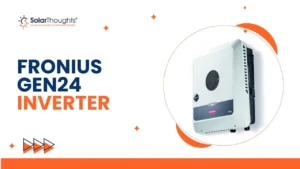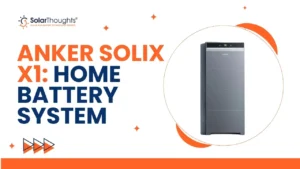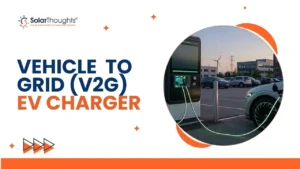As more Australian homeowners invest in solar energy, choosing the right solar battery storage system has become essential. In 2025, all-in-one solar battery systems are gaining massive popularity because they combine an inverter, battery, and energy management system in one efficient unit.
Table of Contents
ToggleTwo leading options in this space are Dyness Cygni and Swatten All-in-One (HV). Both offer advanced technology, strong warranties, and excellent safety standards — but which one delivers better value for homeowners?
This in-depth Dyness Cygni vs Swatten battery comparison breaks down performance, installation, efficiency, and overall value to help you make the best choice for your solar setup.
Dyness Cygni vs Swatten Overview: What Sets Them Apart
Both Dyness and Swatten have designed all-in-one hybrid systems aimed at simplifying installation while maximising solar storage efficiency. Dyness Cygni focuses on ease of use, scalability, and intelligent features, whereas Swatten’s All-in-One system is built for high efficiency and heavy-duty performance.
Each uses LiFePO₄ battery chemistry — a proven technology known for its safety and long cycle life — and both brands include 10-year warranties for long-term reliability and peace of mind.
Key Technical Specifications
| Feature | Dyness Cygni (10kW) | Swatten All-in-One (HV 5–20kW) |
| System Type | Single-phase hybrid | Single & three-phase options |
| Inverter Power | 10kW | 5–20kW |
| Battery Type | LiFePO₄ | LiFePO₄ |
| Usable Energy | 7.68–46.08kWh (expandable) | 9.6–25.6kWh (expandable) |
| Max. PV Input Power | 15,000W | 20,000–40,000W |
| Efficiency | 97.5% | 98.0–98.4% |
| IP Rating | IP66 | IP65 |
| Charge/Discharge Rate | 1C (fast) | 0.5C (standard) |
| Cooling | Natural convection | Natural convection |
| Warranty | 10 years | 10 years |
Both systems are impressive, but Dyness Cygni’s fast 1C charge rate, higher expansion potential, and IP66 protection make it especially suitable for Australian households looking for smart, future-ready solar storage.
Installation and Setup: Plug-and-Play Simplicity vs Stackable Design
Dyness Cygni is designed to make installation remarkably simple. It can be mounted on a wall or placed on the floor, and its plug-and-play configuration allows for a one-minute setup followed by a two-minute automatic system self-check. Because all breakers and isolators are integrated, there’s no need for complex wiring — reducing installation time and costs.
Swatten’s All-in-One system, on the other hand, uses a stacked modular layout. It’s sleek, organised, and offers a 20% faster installation time than traditional separate inverter-battery setups. Additionally, Swatten includes an integrated AC charger, which is a bonus for homeowners planning to charge electric vehicles using solar power.
In short, Dyness Cygni is the easier and quicker system to install, while Swatten’s modular build is slightly more adaptable for multi-unit setups or EV charging.
Battery Performance and Energy Efficiency Compared
Performance-wise, both systems are top-tier. Swatten’s three-phase units reach up to 98.4% efficiency, setting a high benchmark for industrial-grade systems. Dyness Cygni’s 97.5% efficiency may seem slightly lower, but it compensates with a 1C charge/discharge rate, allowing the battery to fully charge in about an hour — ideal for households with high solar generation during daylight hours.
Dyness also supports 150% solar oversizing, meaning you can connect a larger solar array without losing performance. This ensures that every bit of solar energy is effectively stored and used. Swatten delivers stable, consistent output, making it suitable for homes or small businesses that want reliability with minimal energy loss.
Both systems perform exceptionally well, but Dyness offers a practical edge with faster cycling and better solar utilisation flexibility.
Battery Capacity and Scalability for Growing Energy Needs
When comparing scalability, Dyness Cygni offers a clear advantage. It starts with a minimum configuration of 7.68kWh and can expand up to an impressive 46.08kWh using plug-and-play battery hubs. This gives homeowners the ability to start small and add modules later as energy needs grow — a valuable feature for future EV charging or full home backup.
Swatten All-in-One provides storage from 9.6kWh to 25.6kWh, a range that’s sufficient for most medium-sized homes but less flexible for future upgrades. Dyness’s modular architecture and ability to integrate new clusters even after several years make it a better long-term investment for energy independence.
Safety and Protection Features
Both Dyness and Swatten prioritise safety, but Dyness takes protection to another level. The Cygni system includes a built-in aerosol fire suppression system, integrated surge protection, and advanced cell-balancing technology that manages up to 30 cells at once. These measures ensure long-lasting stability and safeguard your home from potential hazards.
Swatten’s All-in-One system includes a comprehensive safety suite with DC reverse polarity protection, insulation monitoring, short-circuit protection, and leakage detection. It’s fully compliant with Australian safety standards and offers excellent reliability.
While both are safe, Dyness’s inclusion of fire suppression and enhanced balancing gives it the upper hand for homeowners who value maximum peace of mind.
Smart Monitoring and Connectivity Options
Dyness Cygni stands out for its smart energy management capabilities. The system offers Wi-Fi, Bluetooth, and Ethernet connectivity, allowing homeowners to monitor and control their system remotely through the Dyness mobile app or web portal. Users can track solar generation, grid interaction, and battery status in real-time.
Swatten’s system offers standard monitoring via RS485, CAN, and WLAN with LED indicators, which works well but lacks the same app-based convenience. For homeowners seeking a connected, user-friendly experience, Dyness delivers superior remote accessibility and control.
Build Quality, Design, and Durability for Australian Conditions
Durability is crucial in Australia’s diverse climate. Swatten’s IP65-rated housing performs reliably outdoors, but Dyness Cygni offers even greater protection with an IP66-rated enclosure, making it more resistant to dust, rain, and heat. Its compact, modern design blends seamlessly with residential environments, while Swatten’s industrial aesthetic feels solid but slightly bulkier.
Both systems use natural convection cooling, which ensures silent operation and minimal maintenance. However, Dyness’s sleek form and higher protection rating make it better suited for varied Australian weather.
Which Battery System Should You Choose?
Both systems are strong contenders. Swatten’s All-in-One is a solid, high-efficiency choice for larger properties or three-phase setups, offering dependable performance and premium engineering. Dyness Cygni, however, provides a more versatile, homeowner-friendly solution — faster charging, simpler installation, and intelligent safety features all in one package.
For most Australian households seeking smart solar storage that’s ready for the future, Dyness Cygni is the clear winner in this comparison.
Why SolarThoughts Recommends Dyness Cygni
At SolarThoughts, we guide Australian homeowners toward the best solar and battery systems for their needs. Dyness Cygni aligns perfectly with our standards for performance, safety, and innovation. Its quick installation, scalable storage, 1C fast charging, and built-in protection make it a standout choice for families looking to reduce grid dependence and save more on energy bills.






